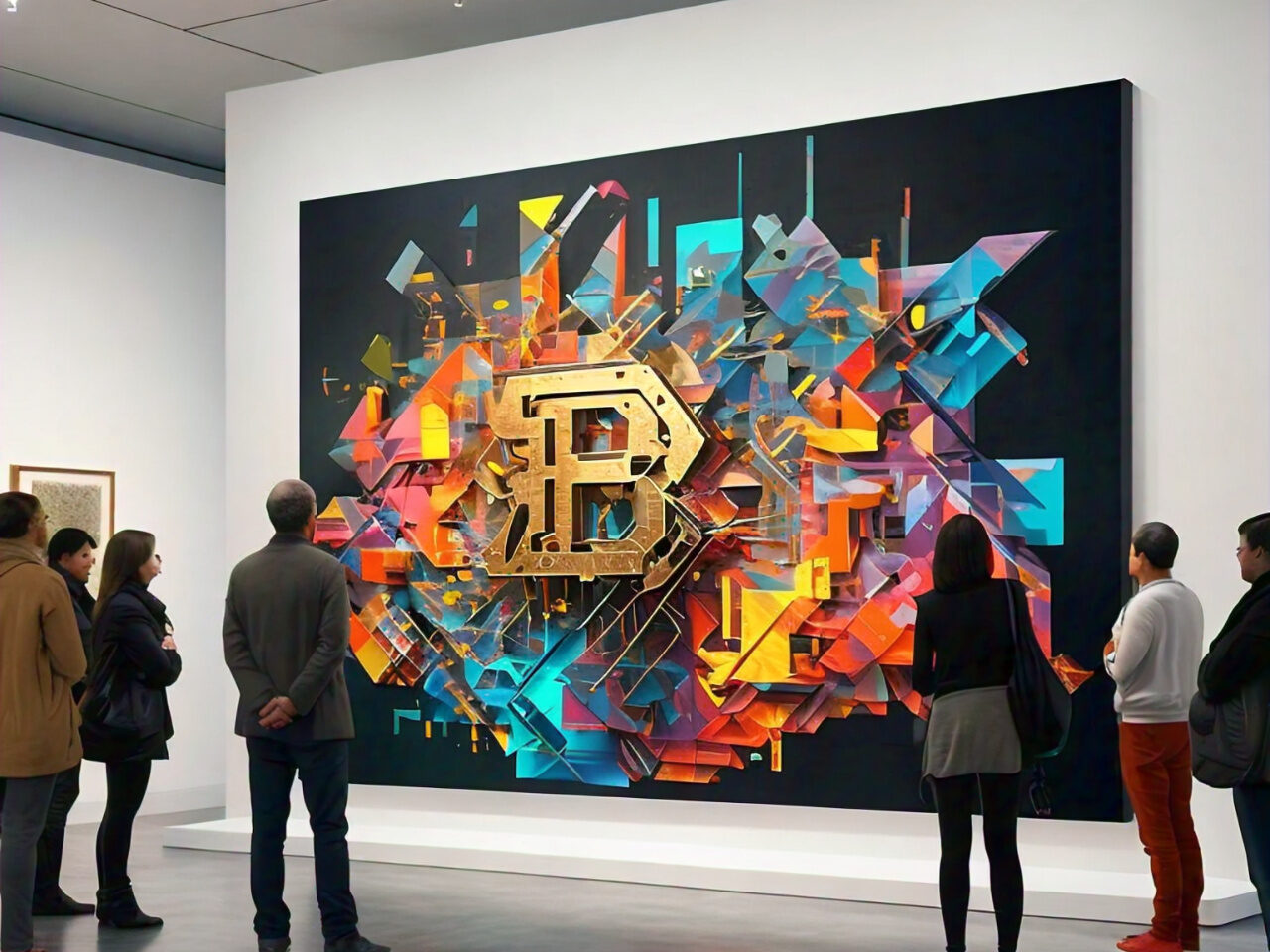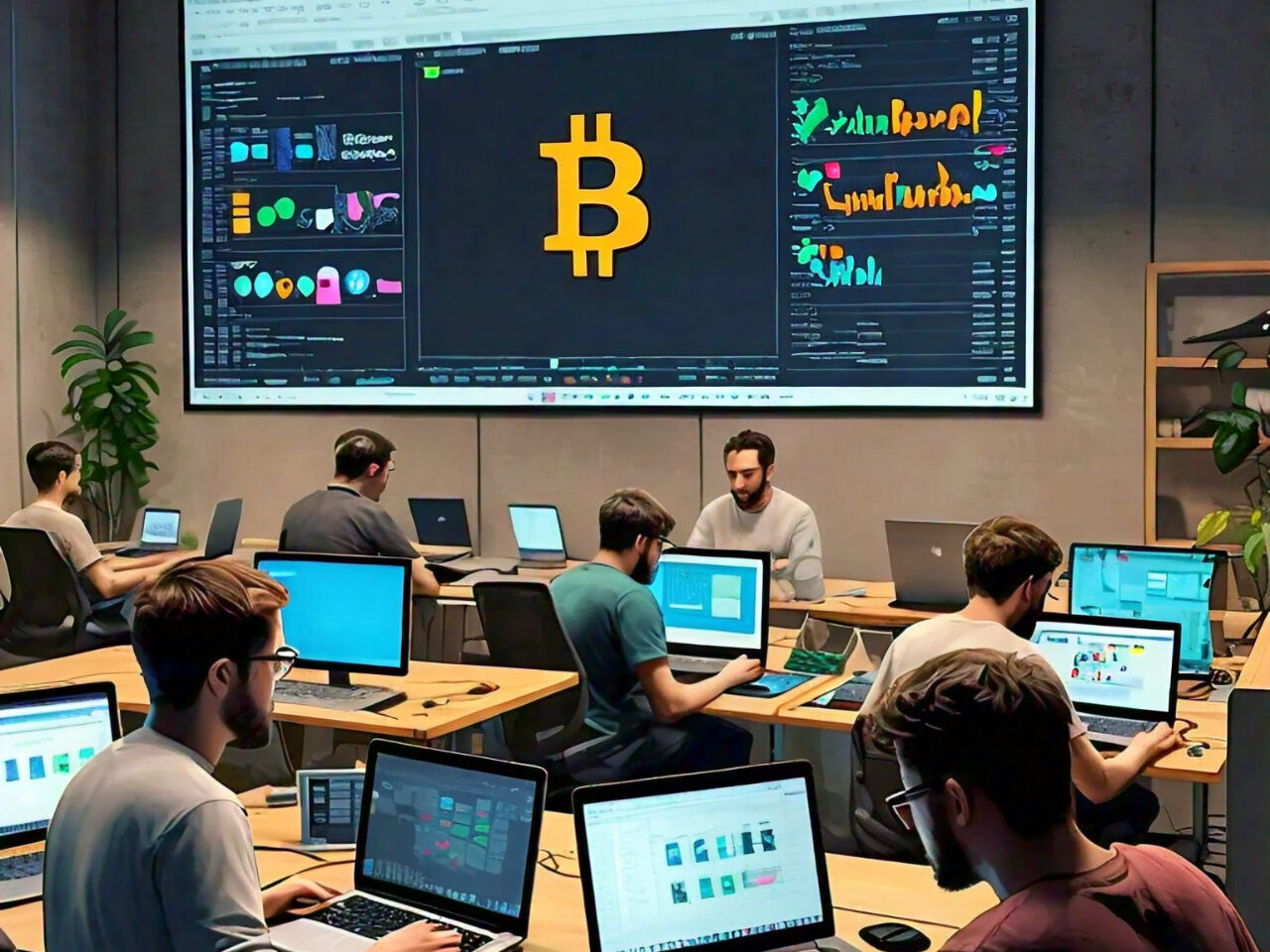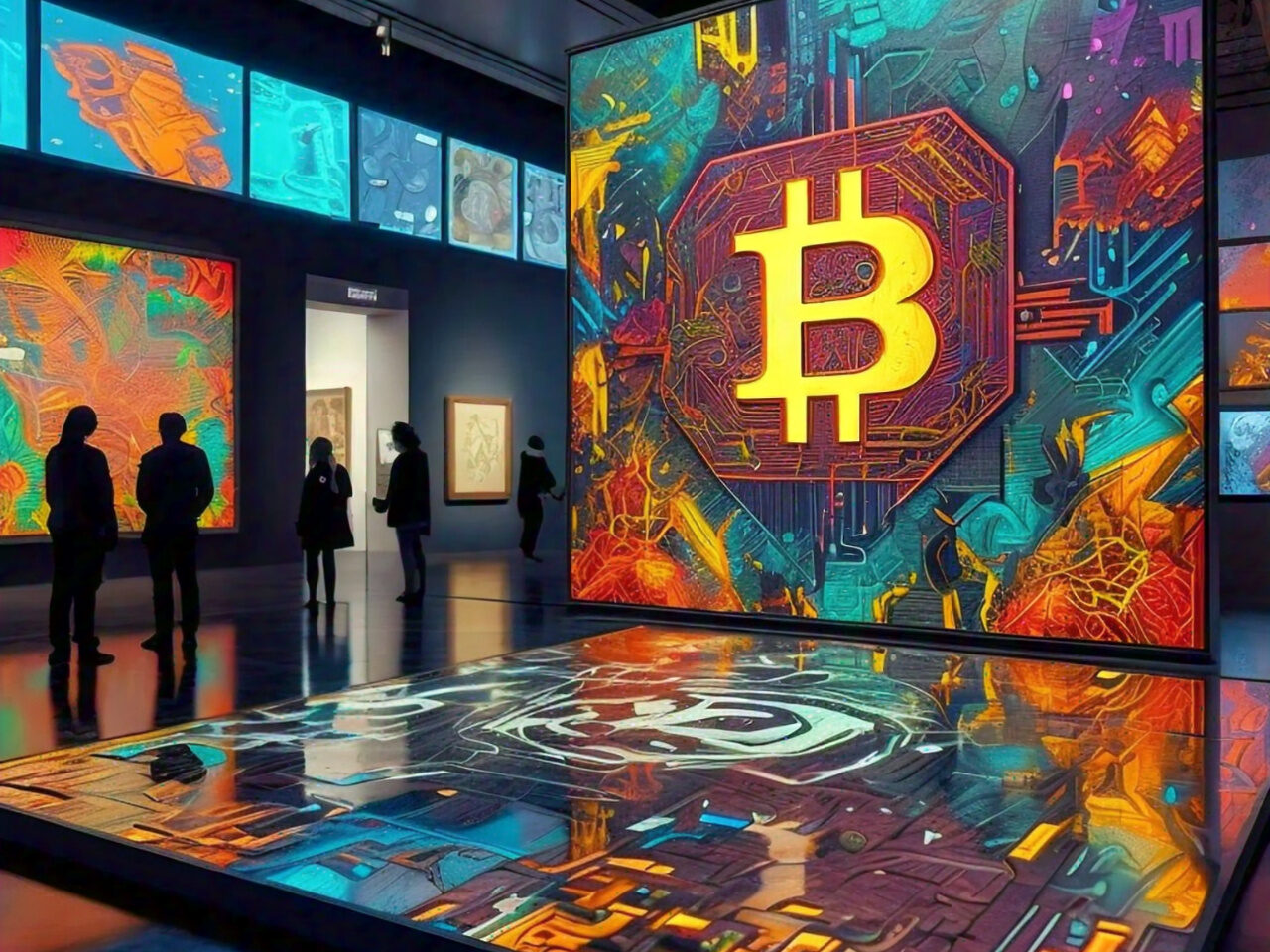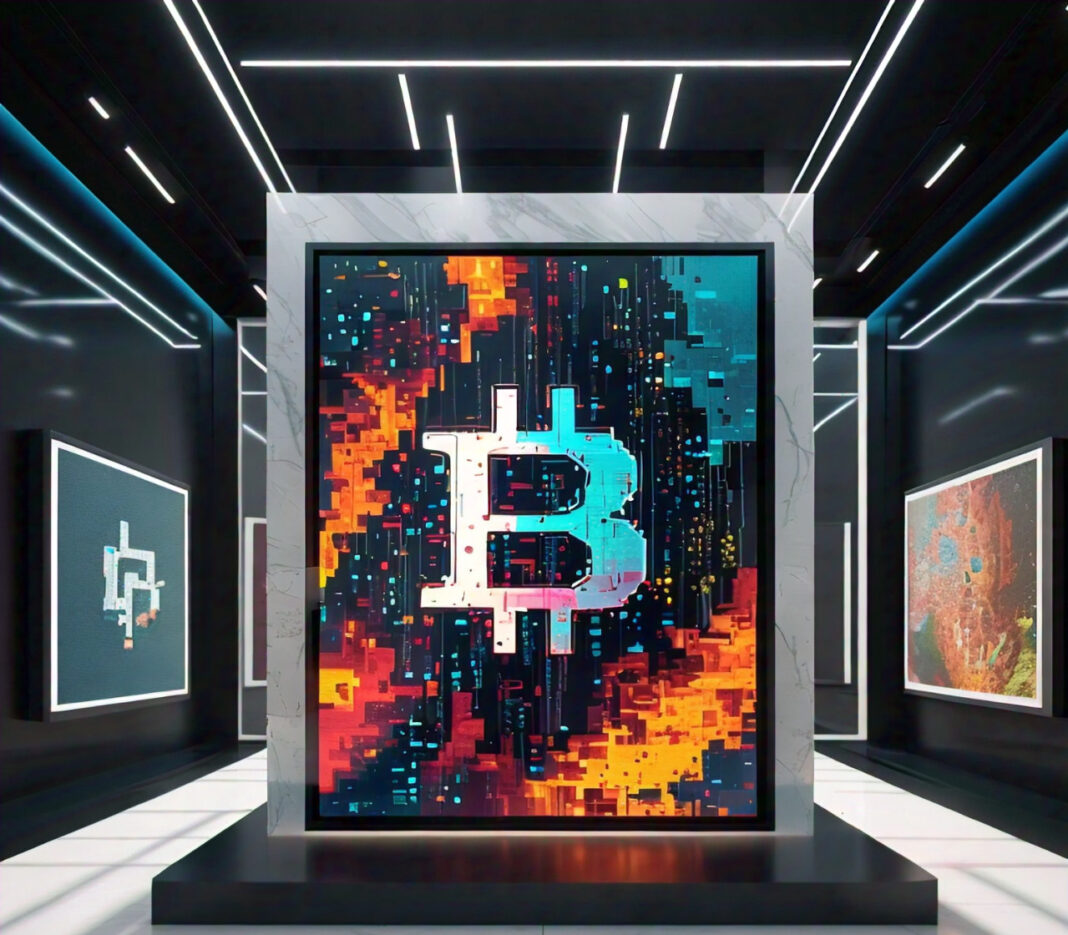
The art world is on the cusp of a revolution, and crypto art is at the forefront. This emerging medium has captured the attention of artists, collectors, and investors alike, sparking debates about its legitimacy, potential, and staying power. As digital technologies continue to reshape the creative landscape, artists and creators are faced with a pressing question: is crypto art a fleeting trend or a sustainable career path?
For artists and creators, understanding the implications of crypto art is crucial. Will it disrupt traditional art markets or create new opportunities for creative expression? Can it provide a viable source of income or is it a speculative bubble waiting to burst? This article aims to provide clarity on these questions, exploring the current state of crypto art, its potential impact on artists’ careers, and what the future may hold.
In this comprehensive guide, we will delve into:
- The career implications of crypto art for artists and creators
- The creative opportunities and innovations emerging in this space
- The financial potential and success stories of crypto art
- The role of blockchain technology in securing artistic ownership
- The latest market trends and emerging opportunities
- The technical skills and tools required to create crypto art
- The importance of community and networking in this space
Whether you’re a seasoned artist or an emerging creator, this article will provide you with the insights and knowledge needed to navigate the exciting and rapidly evolving world of crypto art.
Career Impact and Opportunities
Understanding Crypto Art’s Potential Impact on Traditional Art Careers
The rise of crypto art has sparked concerns about its potential disruption to traditional art markets. However, many experts believe that crypto art will instead create new opportunities for artists, expanding the definition of art and providing alternative revenue streams.
Benefits for Artists:
- Increased creative freedom: Crypto art allows artists to experiment with new mediums, formats, and themes, pushing the boundaries of traditional art.
- Global exposure: Blockchain-based platforms provide a global stage for artists to showcase their work, reaching a broader audience.
- New revenue streams: Crypto art enables artists to monetize their digital creations through tokenized ownership, licensing, and royalties.
Real-Life Examples:
- Grimes’ $6 Million NFT Sale: In 2021, musician and artist Grimes sold over $6 million worth of digital art as NFTs, demonstrating the potential for crypto art to generate significant income.
- Beeple’s Record-Breaking Sale: In 2021, digital artist Beeple sold an NFT for $69 million, setting a new record for the most expensive digital art sale.
Risks and Challenges:
- Market volatility: Crypto art markets can be unpredictable, with fluctuating values and uncertain demand.
- Technical barriers: Creating and selling crypto art requires technical expertise, potentially excluding artists without digital skills.
Expert Insights:
“Crypto art has opened doors for artists to explore new creative avenues and connect with a global audience. However, it’s crucial to understand the technical and market nuances to succeed.” – Rachel Lam, Crypto Art Curator
Creative Opportunities and Innovations
Exploring New Mediums and Formats for Artistic Expression
Crypto art has unleashed a wave of innovation, enabling artists to experiment with novel mediums and formats. This section delves into the exciting possibilities emerging in the crypto art landscape.
Digital Sculptures and 3D Art:
- Virtual reality (VR) and augmented reality (AR) experiences: Artists can create immersive, interactive environments.
- 3D modeling and animation: Crypto art platforms support complex, interactive 3D artworks.
Real-Life Examples:
- Mad Dog Jones’ Interactive Sculptures: Digital artist Mad Dog Jones created interactive 3D sculptures using VR technology, selling them as NFTs.
- Ash Thorp’s 3D Animated Art: Artist Ash Thorp sold a series of 3D animated artworks as NFTs, showcasing the potential for crypto art to push boundaries.
Generative Art and Algorithms:
- Art generated by code: Artists use algorithms to create unique, dynamic artworks.
- Collaborations with AI: Artists partner with artificial intelligence to produce innovative, AI-generated art.
Real-Life Examples:
- Robbie Barrat’s AI-Generated Portraits: Artist Robbie Barrat used AI algorithms to generate unique portraits, selling them as NFTs.
- Anna Ridler’s Data-Driven Art: Artist Anna Ridler created data-driven artworks using machine learning algorithms.
Virtual Galleries and Online Exhibitions:
- Decentralized art platforms: Blockchain-based platforms enable artists to showcase and sell their work directly.
- Virtual reality exhibitions: Artists can curate immersive online exhibitions.
Real-Life Examples:
- SuperRare’s Virtual Gallery: SuperRare, a decentralized art platform, hosts virtual exhibitions featuring crypto artworks.
- Daata Editions’ Online Exhibitions: Daata Editions showcases digital art in online exhibitions.
Financial Potential and Success Stories

Evaluating the Earning Potential of Crypto Art
Crypto art has opened up new revenue streams for artists, providing opportunities for significant financial gains. This section explores the earning potential of crypto art and showcases success stories.
Primary Market Sales:
- Tokenized ownership: Artists can sell unique digital artworks as NFTs.
- Auction houses: Traditional auction houses now include crypto art in their sales.
Real-Life Examples:
- Beeple’s $69 Million NFT Sale: Beeple’s record-breaking sale set a new standard for crypto art prices.
- Grimes’ $6 Million NFT Sale: Grimes’ digital art sale demonstrated the potential for musicians to monetize their visual art.
Secondary Market Sales:
- Resale markets: Platforms like OpenSea and Rarible enable artists to earn royalties on secondary sales.
- Decentralized marketplaces: Blockchain-based marketplaces provide transparent, secure resale options.
Real-Life Examples:
- CryptoPunk #7804 Sale: This rare CryptoPunk NFT resold for $7.5 million, highlighting the potential for secondary market sales.
- Art Blocks’ Secondary Sales: Art Blocks, a decentralized marketplace, has facilitated millions of dollars in secondary sales.
Licensing and Collaborations:
- Brand partnerships: Artists can collaborate with brands, licensing their crypto art for commercial use.
- Music and video collaborations: Crypto art can be integrated into music videos, live events, and other multimedia projects.
Real-Life Examples:
- Takashi Murakami’s Collaborations: The renowned artist has partnered with brands like RTFKT and Fragment Design.
- Deadmau5’s Crypto Art Music Video: Deadmau5 incorporated crypto art into his music video, demonstrating the potential for multimedia collaborations.
Expert Insights:
“Crypto art has democratized access to art ownership, enabling a broader audience to participate. This shift has significant implications for artists’ earning potential.” – Juan Hernandez, Blockchain Art Pioneer
Authenticity and Ownership: Blockchain Technology
Securing Artistic Ownership with Blockchain
Blockchain technology has revolutionized the way artists prove ownership and authenticity. This section delves into the role of blockchain in securing artistic ownership.
Understanding NFTs (Non-Fungible Tokens):
- Unique digital identifiers: NFTs verify ownership and authenticity.
- Smart contracts: Self-executing contracts ensure secure transactions.
Real-Life Examples:
- CryptoPunks: One of the first NFT projects, CryptoPunks has sold over $1 billion worth of unique digital art.
- Art Blocks: A decentralized marketplace utilizing NFTs to verify ownership.
Blockchain-Based Ownership Benefits:
- Immutable records: Blockchain ensures tamper-proof ownership records.
- Transparency: Public ledgers provide clear ownership histories.
Real-Life Examples:
- Beeple’s Open-Edition NFTs: Beeple’s open-edition NFTs demonstrated the potential for blockchain-based ownership.
- SuperRare’s Verified Ownership: SuperRare’s platform utilizes blockchain to verify ownership.
Digital Provenance:
- Chain of custody: Blockchain tracks ownership history.
- Authenticity verification: Artists can prove authenticity.
Real-Life Examples:
- The Forever Rose: This digital art piece was verified using blockchain, ensuring its authenticity.
- Aspen Digital Art: Aspen’s digital art festival utilized blockchain for provenance.
Expert Insights:
“Blockchain technology has empowered artists to take control of their ownership and authenticity. This shift has significant implications for the art world.” – Morgan Neville, Digital Art Curator
Frequently Asked Questions (FAQs)
- What is blockchain?
- How do NFTs work?
- What is digital provenance?
Market Trends and Emerging Opportunities
Staying Updated on the Latest Crypto Art Market Developments
The crypto art market is rapidly evolving, with new trends and opportunities emerging regularly. This section provides insights into current market trends and future predictions.
Current Market Trends:
- Increased adoption: Mainstream recognition and institutional investment.
- Diversification of platforms: Decentralized marketplaces and social media integration.
- Rise of digital collectibles: Unique digital assets beyond art.
Real-Life Examples:
- Christie’s Digital Art Sales: Christie’s auction house has sold over $100 million worth of digital art.
- Instagram’s NFT Integration: Instagram’s recent NFT feature enables artists to showcase digital art.
Emerging Opportunities:
- Virtual reality (VR) and augmented reality (AR) art: Immersive experiences.
- Gaming and interactive art: Collaborations between artists and game developers.
- Decentralized finance (DeFi) and art: New business models for artists.
Real-Life Examples:
- VR First’s Art Initiatives: VR First supports VR art projects, pushing boundaries.
- Decentraland’s Art and Gaming: Decentraland’s blockchain-based gaming platform integrates art.
Future Predictions:
- Increased institutional investment: Mainstream recognition and financial support.
- Global art market expansion: Crypto art reaching broader audiences.
- Evolution of digital ownership: New models for ownership and scarcity.
Expert Insights:
“The crypto art market is poised for significant growth. As technology advances, we’ll see increased adoption and innovative applications.” – Jason Bailey, Digital Art Collector
Key Players and Platforms
- Decentralized marketplaces: OpenSea, Rarible, SuperRare.
- Social media platforms: Instagram, Twitter.
- Auction houses: Christie’s, Sotheby’s.
Additional Resources
- Crypto Art Weekly: Industry newsletter.
- Digital Art Forum: Community discussion.
- Blockchain Art Guide: Comprehensive resource.
Technical Skills and Tools

Learning the Technical Aspects of Creating Crypto Art
To succeed in crypto art, artists need to understand the technical aspects of creating and selling digital art. This section covers the essential tools and skills required.
Blockchain Platforms:
- Ethereum: Most widely used blockchain for crypto art.
- Polkadot: Interoperable blockchain for cross-chain interactions.
- Flow: Blockchain designed for digital collectibles.
Real-Life Examples:
- OpenSea’s Ethereum Integration: OpenSea utilizes Ethereum for secure NFT transactions.
- Rarible’s Flow Adoption: Rarible integrates Flow for efficient digital collectible creation.
Digital Art Software:
- Adobe Photoshop: Industry-standard graphics editor.
- Blender: 3D modeling and animation software.
- Avid Media Composer: Video editing software.
Real-Life Examples:
- Beeple’s Adobe Photoshop Workflow: Beeple uses Photoshop for creating complex digital art.
- Mad Dog Jones’ Blender Animations: Mad Dog Jones utilizes Blender for 3D animated artworks.
NFT Creation Tools:
- Rarible’s NFT Creator: User-friendly tool for creating NFTs.
- OpenSea’s NFT Minting: Secure minting process for creators.
- Mintable’s AI-Powered NFTs: AI-driven NFT creation platform.
Real-Life Examples:
- Grimes’ Rarible NFTs: Grimes utilized Rarible’s NFT creator for her digital art drop.
- Takashi Murakami’s OpenSea NFTs: Murakami minted NFTs on OpenSea.
Programming Languages:
- Solidity: Ethereum’s smart contract language.
- JavaScript: Used for web3 and blockchain development.
- Python: Utilized for data analysis and AI integration.
Real-Life Examples:
- CryptoPunks’ Solidity Contracts: CryptoPunks’ smart contracts written in Solidity.
- Decentraland’s JavaScript Integration: Decentraland uses JavaScript for web3 interactions.
Learning Resources:
- Crypto Art Tutorials: YouTube tutorials and online courses.
- Blockchain Art Communities: Forums and social media groups.
- Web3 Development Documentation: Official documentation for web3 development.
Community and Networking
Connecting with Other Artists and Industry Professionals
Building relationships within the crypto art community is crucial for success. This section explores ways to connect with other artists, collectors, and industry professionals.
Online Communities:
- Discord Servers: Crypto art communities, e.g., CryptoArt Discord.
- Telegram Groups: Real-time discussions, e.g., Crypto Art Collective.
- Reddit Forums: r/CryptoArt and r/NFT.
Real-Life Examples:
- CryptoArt Discord’s Artist Spotlight: Featuring emerging artists.
- Crypto Art Collective’s Telegram Discussions: Industry news and trends.
Social Media Platforms:
- Instagram: Showcase art, engage with collectors.
- Twitter: Real-time discussions, industry news.
- TikTok: Short-form art showcases.
Real-Life Examples:
- Beeple’s Instagram: Showcasing art, engaging with collectors.
- Grimes’ Twitter: Sharing art, industry insights.
Events and Conferences:
- Crypto Art Festivals: Decentraland’s Art Festival.
- NFT Conferences: NFT.NYC, Crypto Art Conference.
- Workshops and Meetups: Local crypto art meetups.
Real-Life Examples:
- Art Basel’s Crypto Art Showcase: Featuring leading crypto artists.
- Crypto Art Conference’s Panel Discussions: Industry experts sharing insights.
Collaborations and Partnerships:
- Artist collaborations: Joint art projects, e.g., Beeple and Grimes.
- Brand partnerships: Collaborations with fashion, music, and gaming brands.
Real-Life Examples:
- Takashi Murakami’s RTFKT Collaboration: Limited-edition NFTs.
- Deadmau5’s Crypto Art Music Video: Collaborative project.
Expert Insights:
“Building relationships within the crypto art community is key to success. Engage with collectors, artists, and industry professionals to stay informed and grow your network.” – Jason Rosenstein, Crypto Art Collector
Additional Resources:
- Crypto Art Directory: Comprehensive list of crypto art communities.
- NFT Calendar: Upcoming events and conferences.
- Crypto Art Podcasts: Industry insights and interviews.
Conclusion
Crypto art’s impact on the art world will only continue to grow. Embracing this emerging medium requires understanding its potential, challenges, and opportunities.
Recap of Key Takeaways
Crypto art has revolutionized the art world, offering new creative and financial opportunities for artists, collectors, and industry professionals. This comprehensive guide has covered:
- The potential impact of crypto art on traditional art careers
- Emerging creative opportunities and innovations
- Financial potential and success stories
- Blockchain technology’s role in securing artistic ownership
- Market trends and emerging opportunities
- Technical skills and tools required
- Importance of community and networking
Key Statistics:
- Over $100 million in crypto art sales in 2021
- 500% increase in NFT sales in 2021
- 100+ blockchain platforms supporting crypto art
Real-Life Examples:
- Beeple’s $69 million NFT sale
- Grimes’ $6 million NFT sale
- CryptoPunks’ $1 billion+ in sales
Future Outlook:
- Increased institutional investment
- Global art market expansion
- Evolution of digital ownership models
Expert Insights:
“Crypto art has democratized access to art ownership, enabling a broader audience to participate.” – Juan Hernandez, Blockchain Art Pioneer
“Crypto art’s potential for creative expression and financial gain is vast and largely untapped.” – Morgan Neville, Digital Art Curator
Call to Action:
- Explore crypto art platforms and communities
- Develop technical skills and knowledge
- Engage with industry professionals and artists






